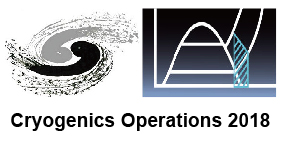Speaker
Mr
KADAYAM VENKATRAMAN SRINIVASAN
(TATA INSTITUTE OF FUNDAMENTAL RESEARCH, MUMBAI)
Description
Low temperature facility (LTF) of Tata Institute of Fundamental Research, (TIFR) Mumbai, India, has been operating and maintaining helium liquefiers, nitrogen generators for about six decades. For the past ten years, helium is liquefied using Linde make, L280 Model helium liquefier. LTF caters an annual liquid helium consumption of 125000 liquid liters by the above helium liquefier. Liquid helium is dispensed to about 45 research laboratories including dilution refrigerator, adiabatic de-magnetization, NMR spectrometers, SQUID’s, PPMS, VSM, STM, Nano electronics, Point Contact Spectroscopy, Photo Electron Spectroscopy, Mossbauer Experiments, Nuclear Atomic Physics / Beam hall experiments and many homemade setups. Many systems are kept at 4.2K continuously. TIFR has a large network of helium gas recovery piping (~1.75 km) and our recovery rate is about 80% to 90%.
Since its installation in June 2008, LTF has carried out many preventive & breakdown maintenance including critical component like turbine. The paper will present our experience in helium liquefier operation and maintenance, highlighting aspects such as: like cryogenic valve seat leakage, non-functional turbine, increasing mother dewar pressure, prolonged dewar neck frosting etc., which were successfully tackled in-house at our facility. The paper will also brief about the various automation and other modifications carried out for the operational smoothness.
Primary author
Mr
KADAYAM VENKATRAMAN SRINIVASAN
(TATA INSTITUTE OF FUNDAMENTAL RESEARCH, MUMBAI)

